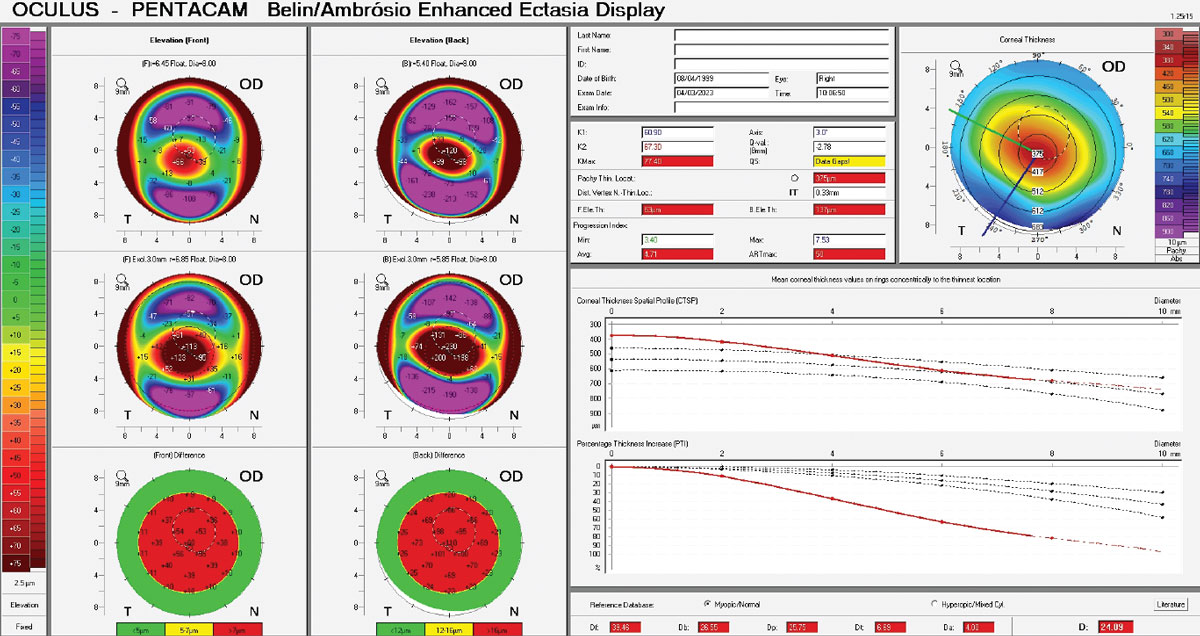 |
| In a study of over 10,000 predominantly Caucasian people, 0.49% were found to have keratoconus. Photo: Christine Sindt, OD. Click image to enlarge. |
The exact prevalence of keratoconus has often been a matter of some debate, as people of certain ethnicities (specifically, those of Middle Eastern descent) are known to have much higher likelihood, but the condition is nevertheless considered one of the rarer corneal diseases globally. A seminal paper on the topic from 1986 pegged it at one case per 2,000 individuals.
A recent study conducted in Germany investigating the current prevalence of keratoconus and evaluating possible associated factors offered updated numbers. The team found that the prevalence of keratoconus in a mainly Caucasian population was approximately tenfold higher than previously reported in the literature when using the latest diagnostic technologies (Scheimpflug imaging). Contrary to previous assumptions, the researchers did not find associations with sex, existing atopy, thyroid dysfunction, diabetes, smoking or depression.
In the population-based, prospective Gutenberg Health Study, 12,423 subjects aged 40 to 80 years old were examined at a five-year follow-up. Subjects underwent a detailed medical history and a general and ophthalmologic examination including Scheimpflug imaging.
Of 10,419 subjects, 75 eyes of 51 subjects (0.49%) were classified as having keratoconus. This puts the prevalence closer to 200 to one for a Caucasian population. This prevalence was approximately equally distributed across different age groups. No gender predisposition could be demonstrated. Logistic regression showed no association between keratoconus and age, sex, BMI, thyroid hormone, smoking, diabetes, arterial hypertension, atopy, allergy, steroid use, sleep apnea, asthma or depression.
The researchers concluded in their paper that the study design and Scheimpflug analysis “enables a reliable statement on the prevalence and association with possible risk factors,” which should be kept in mind when evaluating disease burden moving forward.
Marx-Gross S, Fieß A, Münzel T, et al. Much higher prevalence of keratoconus than announced results of the Gutenberg Health Study. Graefes Arch Clin Exp Ophthalmol. June 14, 2023. [Epub ahead of print]. |

